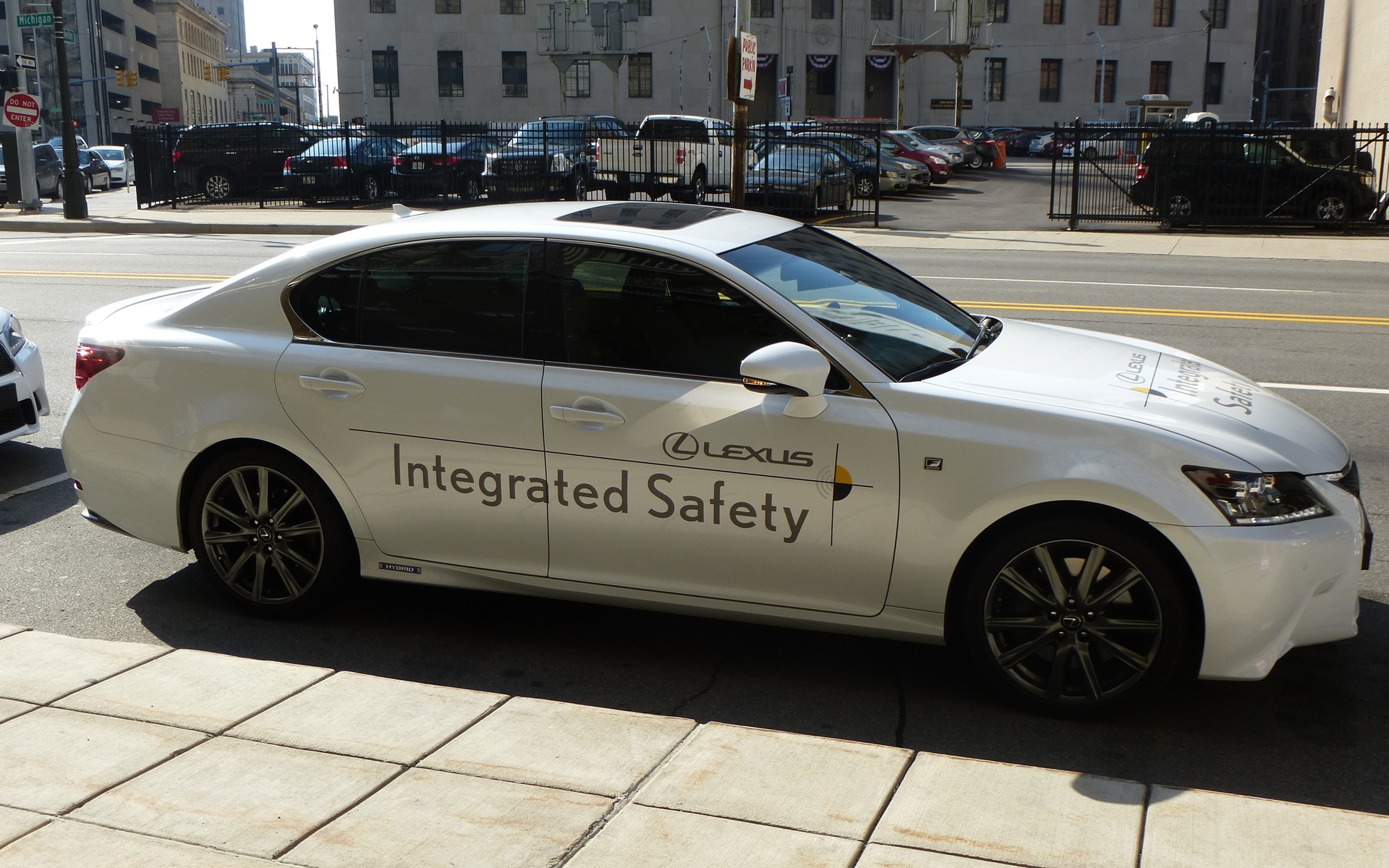Toyota Becomes a Major Player in the Safety Arena
At the Toyota Safety Seminar, presented days before the Intelligent Transport Systems (ITS) 21st World Congress in Detroit, Toyota Motor Corporation with support from their Collaborative Safety Research Center (CSRC) and their partners, presented their philosophy and findings on current and future active safety systems.
The emphasis is not on driver-less cars but to provide tools to enhance awareness and to support drivers manoeuvring in continuously changing traffic conditions. The research focuses on the causes and solutions to such things as Distracted Driving, Active Safety and protecting people.
All research is done in a collaborative open source type of environment and openly shared within the academic community as well as the industry. Providing safer cars benefits everyone, says Toyota.
Active Safety Systems
What are active safety systems, and will they drive the car for me? Well, not quite. Toyota definitely favours systems that prompt the driver to take action rather than systems that take over. Under the umbrella acronym of Automated Highway Driving Assist (AHDA) the systems are designed to work in partnership with the driver. In other words, the car becomes your teammate. The general idea is to help the driver prevent a crash and, if it becomes unavoidable, prepare for it, protect from it and minimize harm after.
The AHDA integrated safety concept uses such modern technologies as:
Radar and LIDAR (LIght Detection And Ranging) to continuously monitor the traffic environment. Collision mitigation and avoidance with systems such as Lane Departure Alert (LDA),
Dynamic Radar Cruise Control (DRCC), Lane Trace Control (LTC) and driver monitoring using predictive and interactive Human Machine Interface (HMI). Injury mitigation is achieved through safety-designed body structure and occupant restraints.
During the seminar DRCC, LTC and driver monitoring (HMI) systems were demonstrated on the streets and highways of downtown Detroit using production vehicles with near production-ready components.
Do They Work on the Road?
Yes and surprisingly well. The test loop, running approximately 25 kilometres, clearly demonstrated how each system performed in a real environment.
Let us start with the Lane Merge and Exit Only Lane preview systems, which operate like GPS maps to clearly illustrate unusual situations and reduce the dreaded surprise effect. As we approached a blind lane merging onto the highway to our left, the Lane Merge provided adequate and unobtrusive warning of possible traffic coming in from that direction. A similar and potentially surprising situation occurred when the lane we were in turned into an Exit Only Lane, again the system provided ample warning enabling a safe change to the center lane.
The Dynamic Radar and Cruise Control (DRCC) works well but is not a major breakthrough, many car builders already providing such systems. In any case, DRCC maintains the set speed and keeps a safe distance between the vehicles in front. It also stops the vehicle entirely, if required, and when the vehicle in front restarts, the system follows.
The most impressive, the Lane Trace Control (LTC) watches the lane markers (lines) and maintains the vehicle within the lane. LTC actually steers the vehicle and does it rather well, keeping the vehicle in the center of the lane without undue swerving. Regardless of the efficiency of these systems, the most important part, the driver, must constantly signify his presence by touching the steering wheel and gazing ahead.
This brings us to the Eyes on Road and Hands on Wheel Alerts. These ensure vigilant driver presence at all times using a steering column-mounted camera to detect head and eye movement and steering wheel sensors to detect liveliness. A visual and increasingly audible signal sounds until the driver complies.
Finally, the Unsupported Scene and End of Highway Previews inform the driver when the system can no longer support them due to loss of visual or other information.
Overall, AHDA can alleviate the fear and anxiety many drivers feel when approaching cities or other unfamiliar surroundings. It provides the driver a high level of contextual awareness helping instill the confidence needed to negotiate chaotic traffic conditions safely. For many people this alone can put some fun back into driving.
A Glimpse at the More Interesting Future Systems
Fatigue Detection: Fatigue causes approximately 20% of accidents. By detecting head and eye movement and connecting to wearable devices able to detect loss of vigilance, or even imminent risky health conditions, effective fatigue detection is literally on our doorstep.
Real-time Parking and Assistance: To the surprise of many, 8 to 74% of city congestion originates from parking research. This system helps locate and drive into parking spots.
Anger/Stress Reduction: Systems connected to your agenda can advise you when to depart for your destination based on real-time traffic monitoring, and weather conditions, a boon for those always waiting until the last minute.
Connected Cars (V2V) and Infrastructures (V2i): Short-range communication systems exchanging information between cars and traffic infrastructure to prevent, amongst other things, collisions.
Keyless Authentication: Digital authentication systems and tiered security levels, including use of facial recognition, can provide robust theft protection.
DIY Diagnostic: Reducing the “check engine” syndrome by knowing the meaning of the code can lead to effective preventive action.
Pedestrian and Animal Mapping: Precise mapping of humans and animals reduces false signals from radars and LIDARs.
When Can We Expect This?
According to Toyota most of the AHDA systems will be integrated into the Toyota line-up by 2017. Panelists at the seminar estimate the more far-fetched systems could see progressive deployment by 2020 if the infrastructure upgrades follow.
Is It Interesting?
You bet! Just imagine the next time you’re in fast moving semi stop and go traffic and, your neighbors actually alert you about their intentions with plenty of time for you to react. Need I say more?












